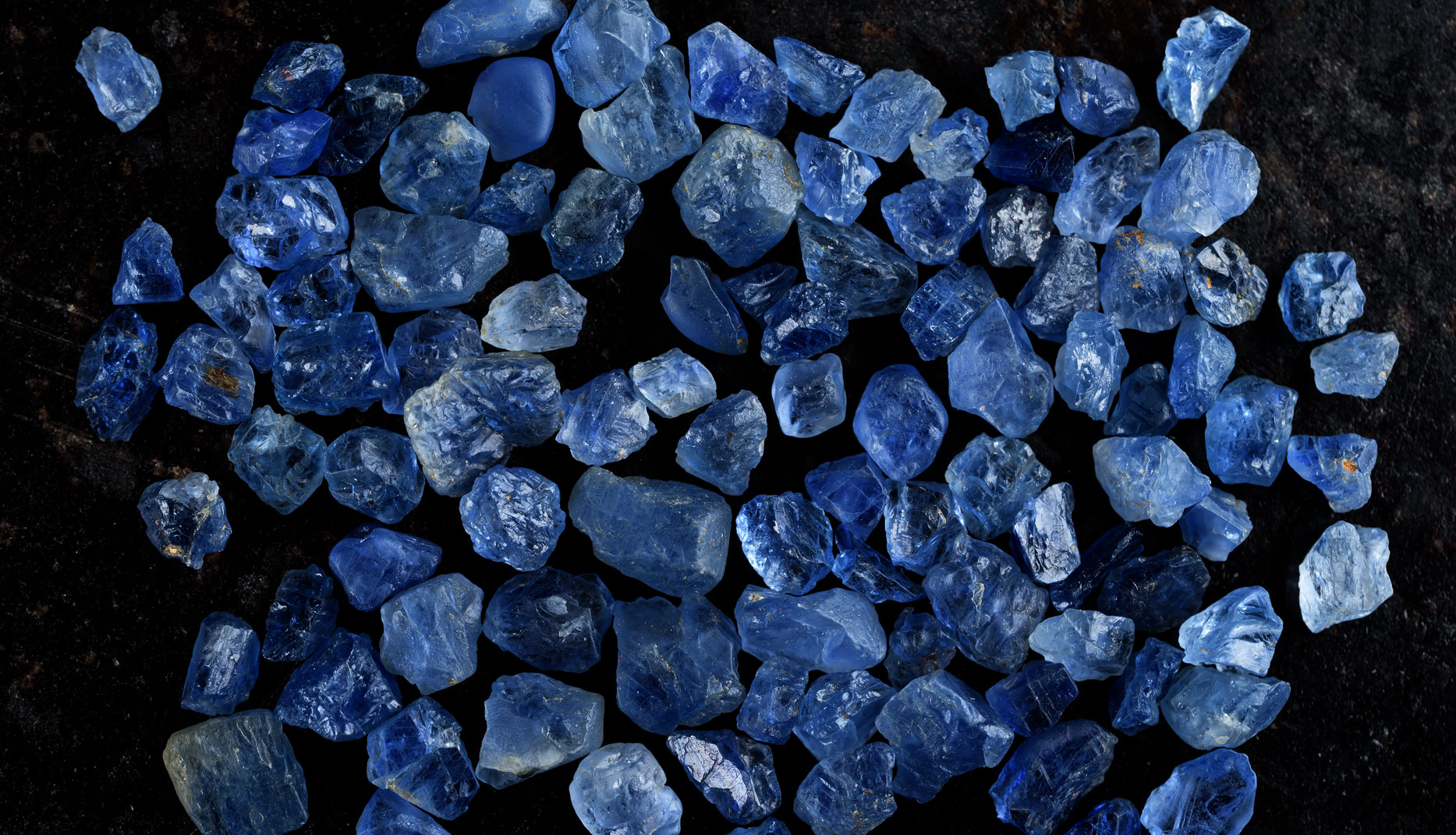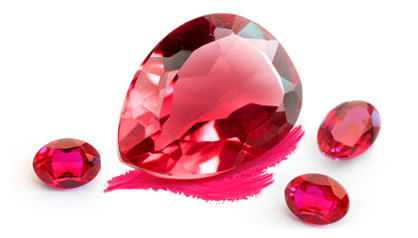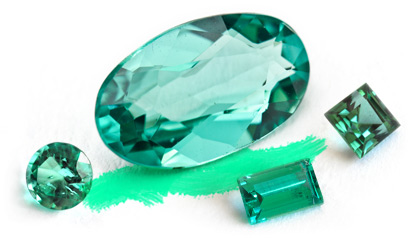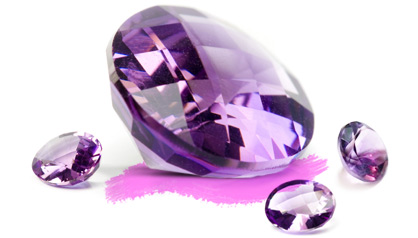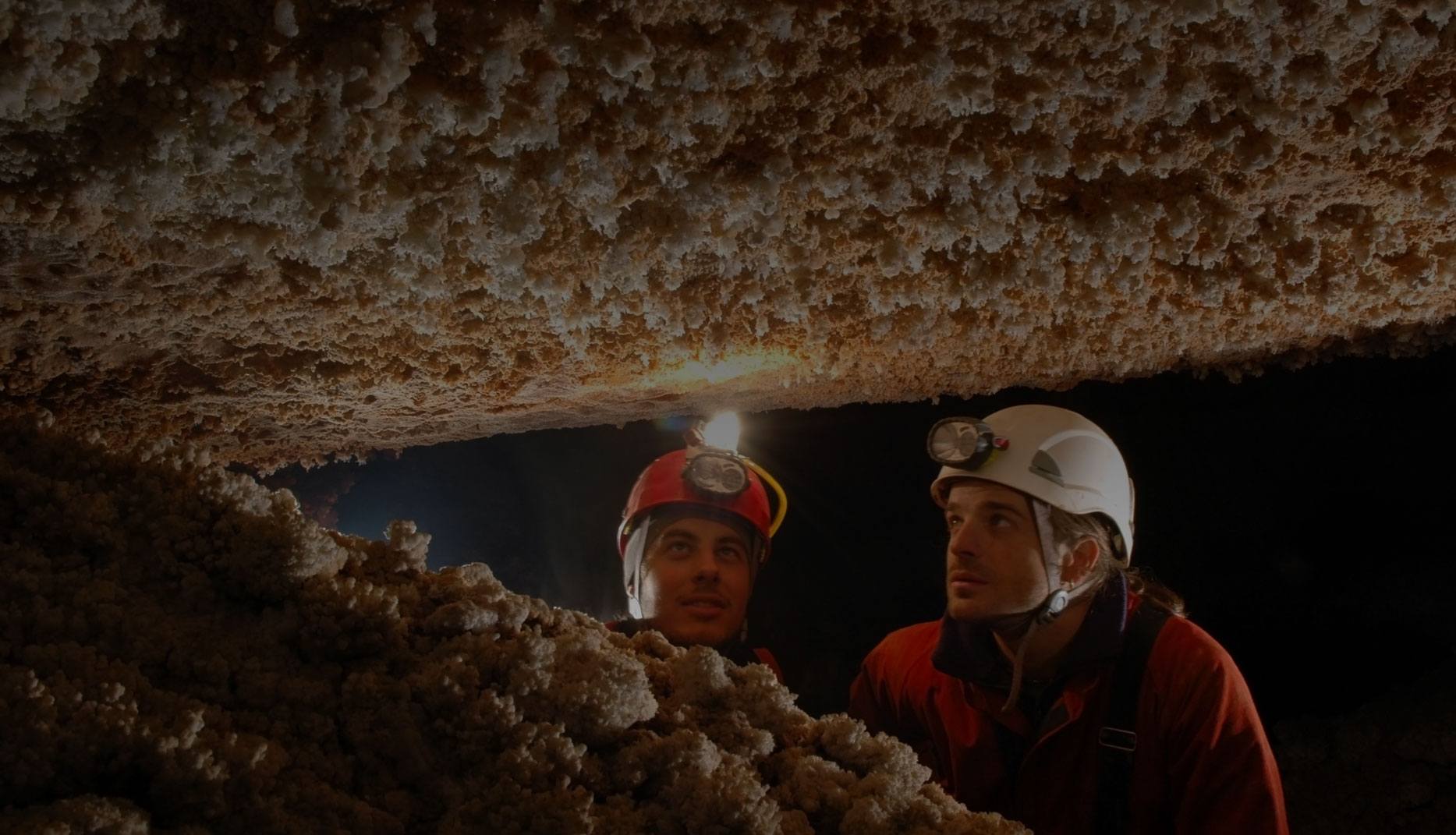The word sapphire comes from the Greek word sappheiros, which translates to “blue stone”. It’s a term most commonly used to describe the blue sapphire variety of a mineral called corundum, however all other colors of gem-quality corundum other than red, are actually called sapphire as well. Current markets hold blue sapphire as the most expensive color variety of the gem, at times on par with a certain pinkish orange variety called Padparadscha sapphire. Every other color is usually priced less than these two varieties, but may also carry a high price-per-carat rate depending on quality. Despite these differences, sapphire gems all share the same essential aluminum oxide composition, as well as the same crystal structure.

Sapphire as a Timeless Gemstone
Blue sapphire has been traditionally revered by civilizations throughout the scope of human history. Ancient Roman kings wore items laden with sapphire gems to protect them against external harm or envious temptations. Robes of the clergy were once decorated with fine stones that many interpreted to be symbols of sincerity, trust and honesty. Precious sapphires were held in deep regard by entire societies and ancient cultures that saw them as emblems of virtue and loyalty among partners and individuals. These beliefs have certainly ushered a timeless influence onto today’s cultural landscape, as we continuously see the prominence of sapphire jewelry in modern expressions of commitment and endearment.
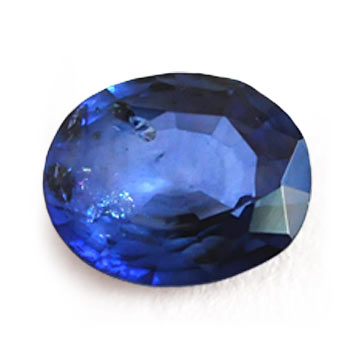
45 Years of Love
A beautiful blue shade of sapphire is often used to symbolize the forty-fifth anniversary of marriage between two lovers.
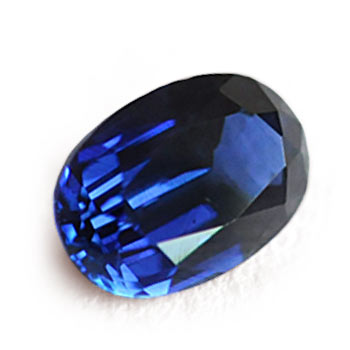
Deep Blues
Top quality blue sapphire is usually a pure blue that may or may not have a tinge of violet. Some greener stones might be more commercial in value.
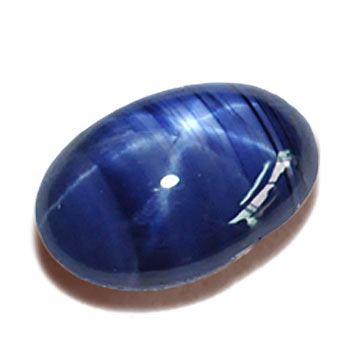
Asterism in Sapphires
Natural and man-made sapphires can both come in a special variety called "star sapphire" or "synthetic star sapphire", if they show an optical phenomenon known as asterism.
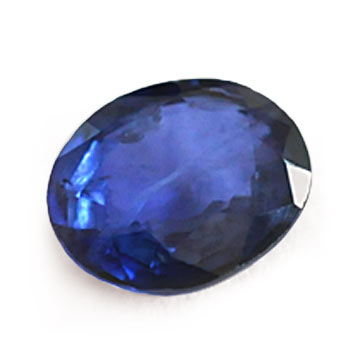
The Iron Princess
The oceanic blues seen in many fine sapphires can be attributed to traces of iron and titanium in their complex crystalline structures.

Heat Treatment
Over 95% of gem-quality sapphires on the market, undergo some form of heat treatment to enhance their color, clarity or even both characteristics together.
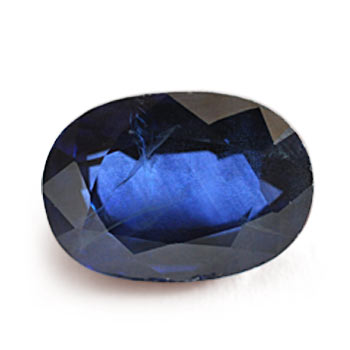
A September Dream
As the birthstone for those born in the month of September, Sapphire is one of the most popular gemstones worn today.
"Blue sapphires belong to the top three colored gemstone varieties of the world, ranked by value and popularity. This group is often labeled as “The Big Three”, and also includes ruby and emerald as its other members. Comparative surveys show that blue sapphire is usually more affordable than ruby of the same quality, yet as gemstones they both share many of the same fascinating properties. One of such is a superior hardness of 9, ranking second only to diamond. This allows a sapphire’s surface to be incredibly resistant to abrasion. Such a trait has allowed sapphire as to be used as an integral material in many industries apart from the jewelry trade, including military technological equipment and modern day horlogerie."
Historical expeditions have recorded that the finest sapphires typically came from just a few localities within some regions of the world. Possibly the most popular of these places was the mountainous territory of Kashmir in the northwestern region of South Asia. This is where miners found a prime deposit of the famous “cornflower blue” sapphires about a century ago, thus allowing the market access to the finest qualities ever encountered for sapphire. Nowadays though, more lucrative sources have since been discovered to supplement the declined Kashmir mining production. Many of these places produce a wide range of quality tiers for the gemstone, allowing them to serve every level of the market.

A list for the top quality stone sources would probably begin with the island country of Sri Lanka. Many sapphires on today’s market have been sourced from mining companies or gem dealers in Ratnapura city, which incidentally is also known as the city of gems. It’s been prevalent on the market that much of Sri Lanka’s fine blue sapphires tend to have a lighter and brighter appearances than normal. Some would term such stones as “Ceylon blue sapphires”, named after the locality’s historical identity. These precious stones are well appreciated in the current market for their refreshing, yet noble saturations. Most commercial quality sapphires often appear “inky” dark, and so there exists a significant buyer population that holds interest in these lighter, but vibrant specimens. Sri Lanka is also famous for other sapphire colors, such as golden yellow and the Padparadscha variety (pinkish orange). The country’s blue stones however, are among the world’s most prized gem materials. Some of the largest sapphires on display at the US Smithsonian institute are products of Sri Lankan origin. Stories of finding sapphires in the river gravels of Sri Lankan waters have tempted droves of mining groups to prospect in the alluvial deposits of this significant source. Most gemstones that come from this source are usually exported to buyers from the US and Hong Kong, or to corundum treatment facilities in Thailand for processing. The Thai have become experts in the precise art of ruby and sapphire heat treatment, which allows a stone’s color to improve based on inherent potentials. It’s estimated that about 90 to 95% of sapphires used in jewelry are heat treated to some degree, although this process is typical of most corundum gemstones and is completely accepted in the trade.
One other source of fine sapphire is Myanmar (Burma), famous for slightly darker stones that the locals often describe as “Royal blue”. Most Burmese gems that belong to the top quality ranges can rival those mined from Kashmir and Sri Lankan sources, though the country is still more famous for its ruby deposits in general. Many scientists believe that the mineral rich geological landscapes of Myanmar allow it to play host to a wide range of corundum qualities. Out of which, the very best stones go on to be auctioned for millions of dollars at several international jewelry events. These in turn, bring publicity to the country as a prime source for top quality material. Gem buyers from all over the world have travelled to Myanmar in search of both rough and cut gem specimens, however just like with any popular trade locality- synthetic (man-made) sapphires are also plentifully sold in many burmese markets. A foundation in gemology is needed so as not to confuse man-made stones with their natural counterparts.

("A diverse mix of products", Top-left: a synthetic corundum (ruby) boule still attached to its raw rod-like structure, Bottom-left: a natural blue sapphire bipyramidal specimen, top-middle and bottom-middle: two flame-fusion created man-made sapphire boules, middle-center: faceted sapphire gemstones, bottom-right: a natural kyanite crystal; a mineral sometimes mistaken for sapphire.)
Sapphires can also be found in Madagascar, the US and Australia among other places. The majority of worldwide mining production however is classed as commercial quality and typically has to undergo different forms of post-mining processing or enhancement. Australian sapphire operations are some of the largest in the world, with much of their production supplying the commercial to mid-market demands of the jewelry industry. A general stereotype for the country’s commercial quality sapphire will depict a dark blue stone that’s sometimes described as “inky blue”. It’s fairly common for many commercial quality stones to contain straight or angular color-zoning. These are classified as inclusions and can actually help gemologists verify the identity of a sapphire. Despite quality output proportions, Australia does manage to produce its own share of higher quality stones that can also fetch values well above the thousand-dollar mark. Exceptional specimens can sometimes rival the top qualities of Myanmar’s output, though these are certainly harder to come by.
Caring for Jewelry Items and Evaluation of Gemstones
Sapphires are some of the toughest gemstones in the world, but it’s still good practice to keep each stone in its own bag, or at least out of contact with other stones. A soft-lined jewelry case is a good storage option, while routine cleaning can be done with mild soapy water and a lint-free gem cloth. Stones with treatments must be cleaned under carefully prescribed conditions, as some traditional jewelry cleaning agents can damage fillers or coatings that may be present in the gem. General wiping with your gem cloth can definitely reduce the need for chemical cleaners or steam cleaning. Sapphires that were simply heat treated without additives are usually as sturdy as unheated gems.
Jewelry Repair
When a bench jeweler does repair work on a jewelry piece set with blue sapphires, it’s always best to take precautions. Each stone can either be removed or protected by an anti-heat substance so that no accidental color alteration occurs. High temperatures can sometimes cause atomic reactions within a gemstone’s chemical structure, inducing unforeseen changes in its appearance.
Frequently Asked Questions

What are Star Sapphires?
Some rough corundum specimens contain groups of needle-like inclusions. These elongated clarity characteristics usually come in the form of the mineral rutile, but can also be accompanied by thin rods of hematite or another mineral species. The growth direction of these needles often corresponds with the structure of a host crystal, so many rubies and sapphires may have groups of needles in three different intersecting directions (rutile). This allows a cutter to fashion the gemstone in a certain way, revealing a phenomenal optical effect called asterism when light reflects off a domed surface. People in the trade have since labeled this variety of corundum as “star sapphire” (or “star ruby” if red).
Can people grow sapphire in a laboratory?
Yes, man-made sapphires have been around since 1837, and are used in several industries apart from the jewelry trade. We call these stones “synthetics” to differentiate them from natural gemstones, which are fairly easy to distinguish using basic gemological equipment. Most current methods for developing synthetic sapphire have tell-tale signs that allow gemologists to identify their products as man-made stones. Proper disclosure of these items is key to doing ethical business in the jewelry industry today.
What is Padparadscha sapphire?
The term Padparadscha stems from the Singhalese word for a certain species of lotus blossom whose color can be described as pinkish orange. It is currently used in the jewelry trade to signify fine sapphires with a similar color variety and vibrant saturation. Stones of top quality can often times rival the prices of fine blue sapphires on the international markets. Recent buyer demand for these special gemstones has been steadily increasing over the past few years, and will most likely continue to grow as colored stones rise in popularity.
How do you evaluate the color of blue sapphires?
It’s often considered by many that the pure blue stones hold the most value. Sapphires can come in a very wide range of colors, and sometimes these colors can show up as modifying hues in a blue stone. Different personal tastes give their own value assignment to specific colors, but there is a general consensus among dealers that stones with a slight hint of violet are usually more valuable than those with a greenish tinge. The latter of the two is more common in commercial-quality parcels of blue sapphire, as are stones with more dark violet than blue in their color composition.
Is tanzanite a good sapphire alternative?
In the recent decade, popularity for a violet-blue gemstone called tanzanite has risen in many consumer countries. Top quality bluish stones are often good alternatives for large fine sapphires, due to their brilliant colors and relative affordability. Gem-quality tanzanite usually undergoes some form of heat-treatment to achieve a more ideal color, but the results of such procedures still vary from gemstone to gemstone. Many tanzanite specimens actually have more of a purple to violet color base rather than a blue one, but in its finer qualities the stone can look very similar to a blue sapphire.
What is the value of a sapphire enhanced with heat treatment?
Most blue sapphires on the market today have undergone some form of heat treatment to improve color. It’s estimated that over ninety percent of sapphires in the trade are actually post-treated stones. Gemstone dealers place a premium on quality sapphires that remain untreated, however this does not necessarily mean that the value of a gem decreases after heat treatment. Actually, the opposite is more likely to be true. Many fine quality sapphires that range past the thousand-dollar mark are actually heated before they make their way into the wholesale trade. Some of these stones might have been priced lower as untreated gems due to their original color being too grayish or low in saturation.
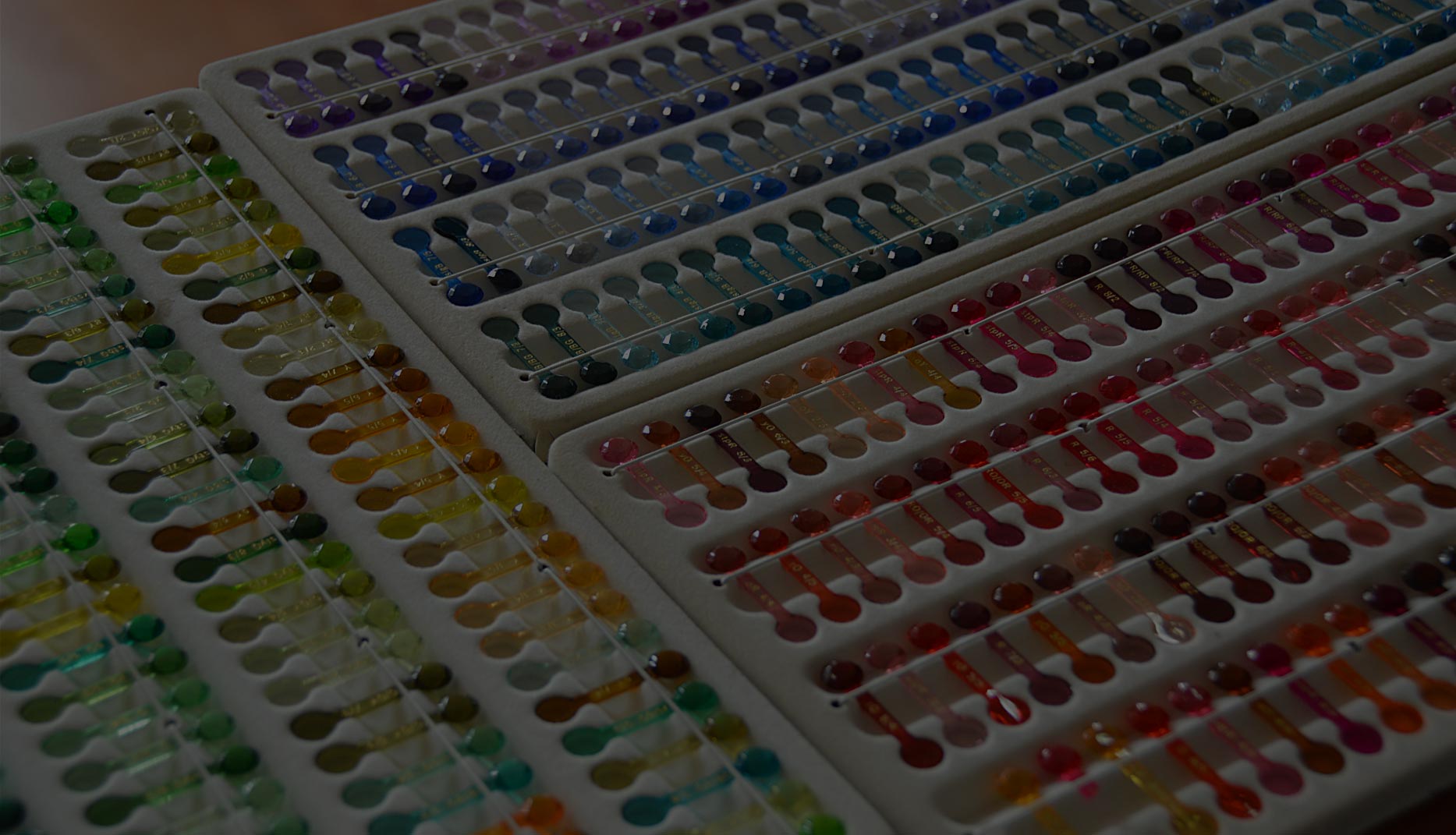
Sapphire Gemological Information
Gem Species:
Corundum
Composition:
Al2O3
Greenish Blue to
Violetish Blue
Refractive Index:
1.762 to 1.770
Specific Gravity:
4.00 (+/- 0.05)
Hardness:
9 (Mohs)
Gemologist's Lab Notes
The Scientific Identification of Sapphire
Sapphire is essentially composed of aluminum oxide, crystallized in its most stable form. Both ruby and sapphire share the same basic composition, but while ruby gets its reddish color from chromium, blue sapphire attributes its own hue to the presence of iron and titanium. An interesting transfer of electrons between these two trace elements is primarily what’s responsible for giving color to the world’s most popular blue gemstone. The specific chemical structure of corundum also allows both sapphires and rubies to be extremely hard and resistant to everyday wear.
Sapphire is a gemstone that belongs to the trigonal crystal system, along with ruby, quartz and tourmaline. It’s classified as a doubly refractive gem that essentially splits incoming light rays into two “paths” as they enter its interior. Refraction is what happens when light slows down and possibly changes its direction of travel inside a certain material. We can actually note the degree of refraction in sapphire by using a refractometer, which is an instrument that measures a gem’s refractive index. For this case, sapphire has an RI value of 1.762 to 1.770. The same goes for ruby and all varieties of corundum. Properties like RI can be used to help identify gemstones because of their consistency in testing. Some other traits might more be unique to a gem, like specific inclusions for example. Many sapphires have rutile needles that intersect in three directions, often separated by 60 degree angles. These needles might aid a gemologist’s analysis of whether or not a blue sapphire is natural or synthetic. Sometimes they may even show evidence of heat treatment, based on how in-tact and defined they are. Clarity characteristics play a big role in the separation of natural sapphire from man-made stones. Lab-grown counterparts of blue sapphire often show tell-tale inclusions related to their creation process as well.
Not All Sapphires are Blue
The trade recognizes several colors of corundum. Red is labeled as ruby, and blue is called sapphire. Now, for every other color, we call these stones “fancy sapphires” or “fancy colored sapphires”. This terminology is sometimes misinterpreted to mean that a gem’s color is artificial, but in reality that is not true. The term merely refers to all colors of corundum other than red or blue. In fact, the fancy sapphire trade has recently seen growth spikes due to the emerging popularity of padparadscha colors and the usage of golden sapphires as fine alternatives for yellow tinted diamonds. Similarly, sapphire colors such as pink, purple and orange also tend to fit well with seasonal and contemporary jewelry pieces, while at the same time providing customers with better options for affordability and color diversity.
The Toughest Gemstones
Many people often think of diamond as the strongest gemstone due to its ability to remain unscathed when scratched by most materials. Though apart from its superior hardness, diamond actually has a few cleavage planes that sapphire does not possess. If you’re not familiar with these planes, they’re actually directions of atomic weakness in the structure of a crystal. This might allow a strong, properly placed blow to cleanly break a diamond into two pieces if the orientation is correct. Sapphires on the other hand, have no such cleavage directions, and are more resilient when it comes to breakage risks. The only commonly known gemstone material with higher toughness than sapphire is jade, which possesses a very strong interlocking crystal structure.

Sapphire Pleochroism
One test for separating sapphire from certain other blue gems, is to observe for pleochroism using a gemological dichroscope. This usually appears as two hues of blue, modified by hints of violet or green. Some imitations will only show one shade of blue, due to a singly refractive crystal structure.

Silk Inclusions in Some Sapphire Gemstones
Speaking on the topic of clarity characteristics, silk is a term used for groups of very fine needle-like inclusions that can be found in sapphire. These inclusions are sometimes helpful aids for determining a stone’s origin, and might also increase the value or beauty of some exceptional specimens.

A Three Band Spectrum
Natural blue sapphire with high iron content may show a distinct three-band pattern when viewed using a spectroscope. The first and strongest band would be at 450 nanometers, between the blue and purple areas of the spectrum. The two lighter bands can be observed at the positions; 460nm and 470nm.
Qualities, Value and Demand
When determining the value for blue sapphire and most other gemstones, color is usually the most important attribute to be considered. Other aspects like clarity and carat weight also increase the total price set for a gemstone. Any final value will always depend on the sum of all traits present, and whether they match up together in a visual appeal that’s received well by customers.

In April of 2014, a sapphire ring sold at auction for over 180,000 US dollars per carat. This event was recorded in history as the world-record price for a sapphire gem at auction. The papers declared that the million dollar stone came from one of the shortest-lived fine sapphire sources in the world; the mountainous region of Kashmir, where some of the planet’s greatest sapphires where once unearthed beneath tons of rock and snow. The trade often holds a premium for the finest Kashmir sapphires, praising their deep cornflower blue coloration and velvety silk inclusions. It’s commonly heard of today that the market prices for sapphires are steadily on the rise, especially looking through the high and extra fine quality sectors. Such gemstones that make it to auction are usually large, saturated blue specimens that come with a provenance statement to describe where they came from or which famous personality owned them. Many middle-market class gemstones are also given a trade spotlight due to the growing worldwide reception of blue gemstone jewelry (such as sapphire and tanzanite). Additionally, most mid-to-commercial graded sapphires can now also be seen in hues of brilliant blue due to the extensive advancement of heating procedures founded in Thailand and some other areas of the world.
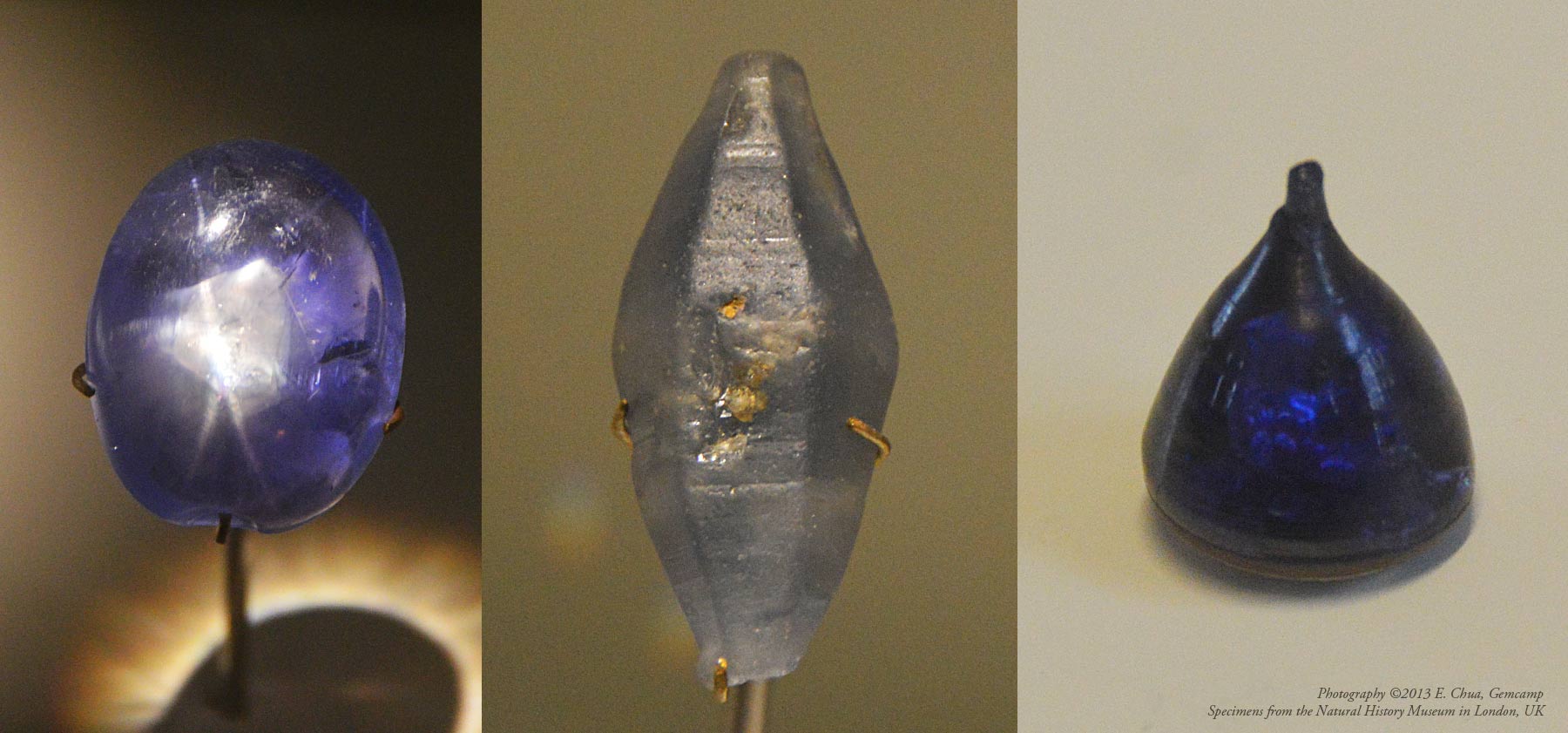
Sapphires can come in almost every shape, size and color. They count for the biggest variety category of gem-quality corundum, and have one of the largest gemstone color ranges available in today’s markets. Several of the most popular sapphire varieties also exhibit phenomenal optical effects, such as those seen in black star sapphires. One may argue that the gemstone’s longstanding history as a treasure of royalty, sits in comparison to that of a more valuable gemstone like ruby. Likewise, sapphire’s popular usage in religious and commitment-themed jewelry has been well-founded since the middle-ages of human history. Such diverse reception warrants the need for public awareness on the different qualities, treatments and value-affecting factors of the gem, so as to fully understand the reasons behind its valuation trends.
Synthetics, Imitations and Treatments
Because of sapphire’s popular reception in the trade, many companies have invented several ways of manufacturing its man-made counterpart. The flame-fusion technique is by far the most widespread and most affordable creation technique used today, followed in suite by several other methods for growing flux-based or hydrothermal synthetic stones. Sapphire simulants on the other hand, have been on the market scene for longer than anyone can remember. Commonly seen imitations may include synthetic spinel, synthetic corundum doublets, cobalt glass, assembled garnet-and-glass gems, and possibly other stones treated with blue dye.
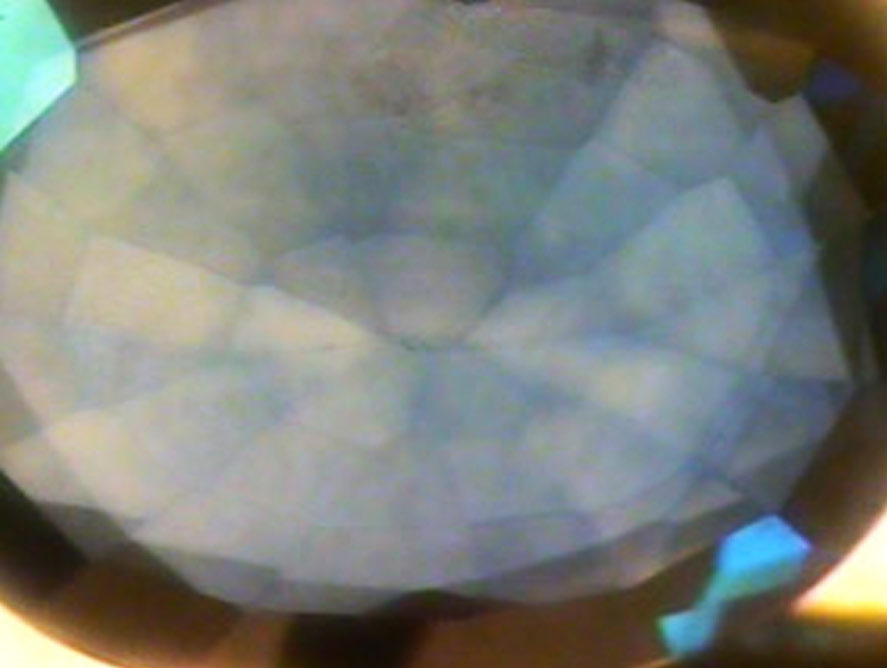
Treatment | Lattice Diffusion
Facet-conformal color zoning patternLattice diffusion using titanium to enhance the color of blue sapphire can often result in color zoning that conforms to the facet-pattern of a gemstone, observed under diffused lighting and microscopy
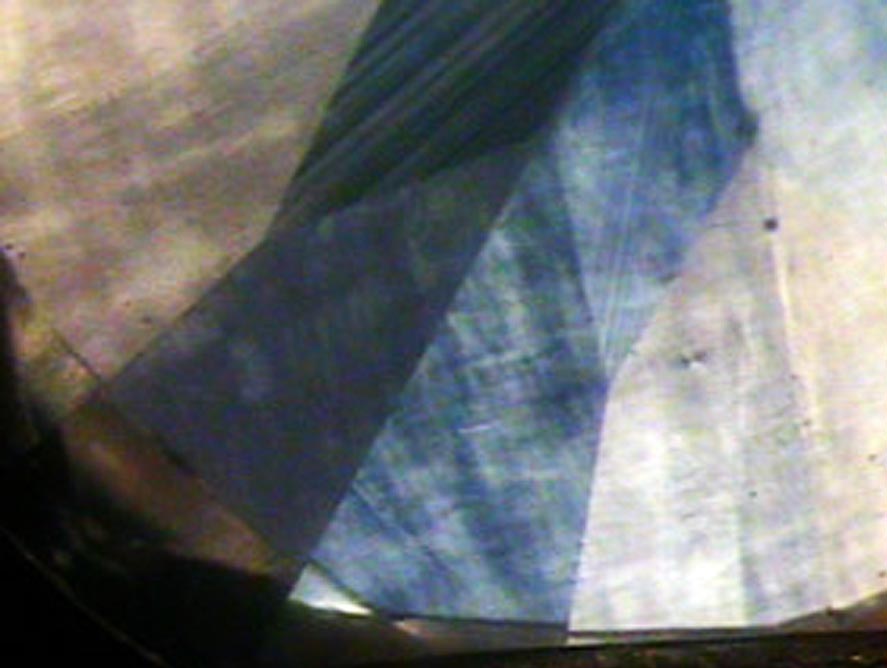
Imitation | Synthetic Spinel
Crosshatch pattern of synthetic spinel under the crossed-polars view of a polariscopeBlue synthetic spinel is an inexpensive imitator of sapphire. Under the crossed polars view, when using a polariscope, it should typically show a very charactertistic crosshatch pattern.

Synthetic | Flame Fusion
A multitude of tiny gas bubbles inside a flame fusion synthetic star sapphireThe flame fusion technique of growing man-made sapphire can also induce a large amount of tiny gas bubbles, especially in (but not limited to) artificially grown star sapphire specimens.
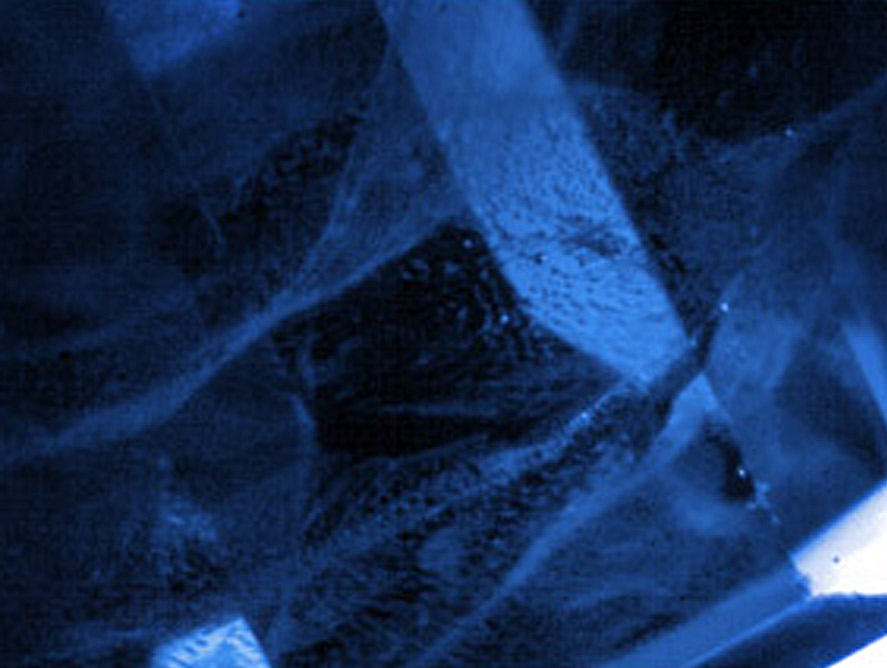
Synthetic | Flux Growth
Veil-like fingerprint inclusions within a flux-grown synthetic sapphireFlux-grown man-made sapphires can often show very non-planar, veil-like fingerprint inclusions within them. It can be difficult for non-gemologists to differentiate between these flux fingerprints and the natural fingerprints seen in earth-mined natural stones.
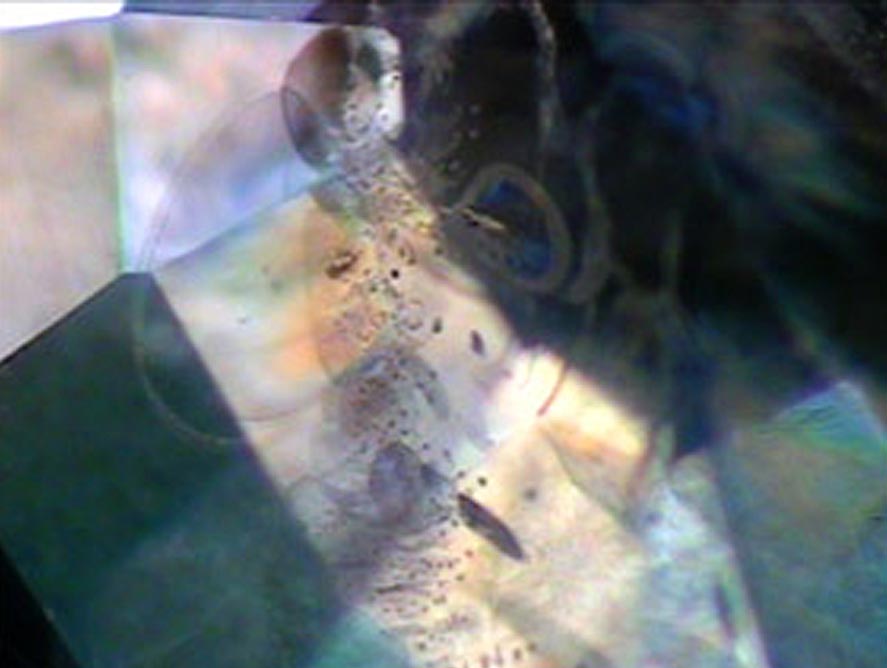
Treatment | Heating
Partially healed fractures and tension halos around inclusionsMany sapphires today undergo heat treatment. This can sometimes leave partially healed fractures and frosted looking inclusions as well as tension halos around smaller inclusions.
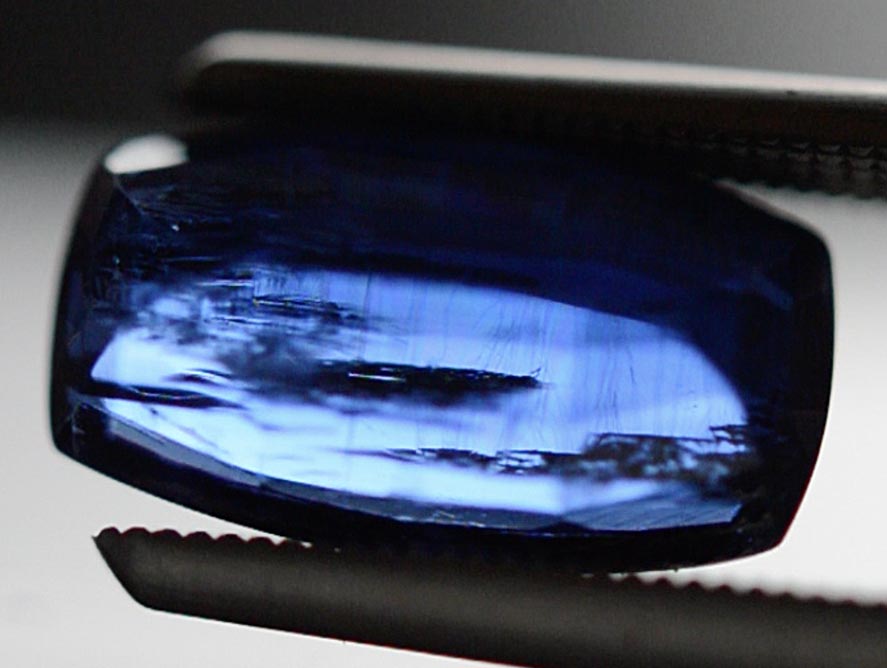
Alternative | Kyanite
A kyanite specimen showing cleavage-related fracturesKyanite is a natural mineral that can be mistaken for sapphire. It has two very distinct cleavage directions and fractures within the stone can commonly appear *almost perpendicular to each other. Use tests like RI to separate from sapphire.
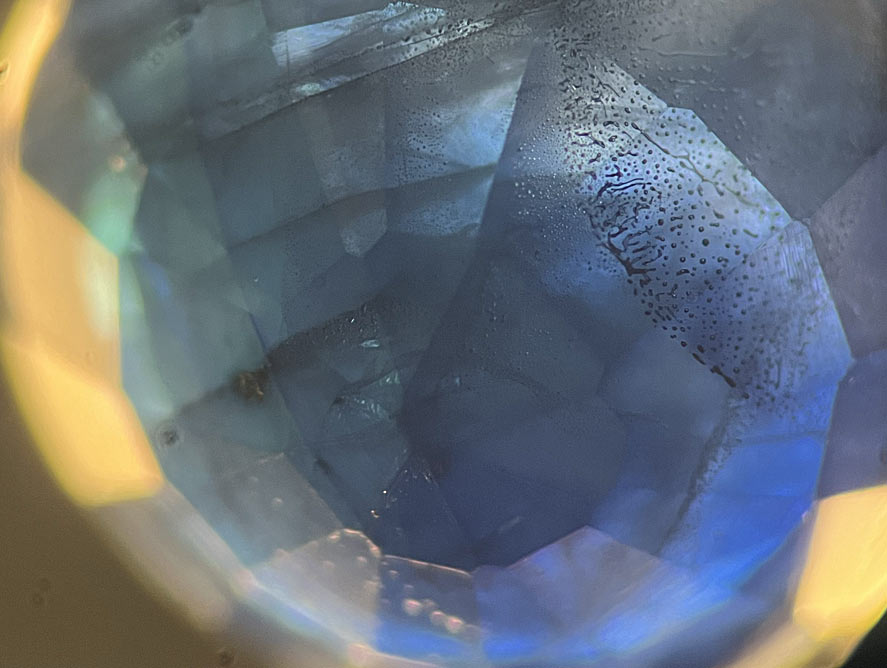
Treatment | Lattice Diffusion
Color zoning conformal to facets and fracturesDiffusion-treated blue sapphire can often show strong color-zoned concentrations along fractures and other inclusions apart from being facet-conformal.
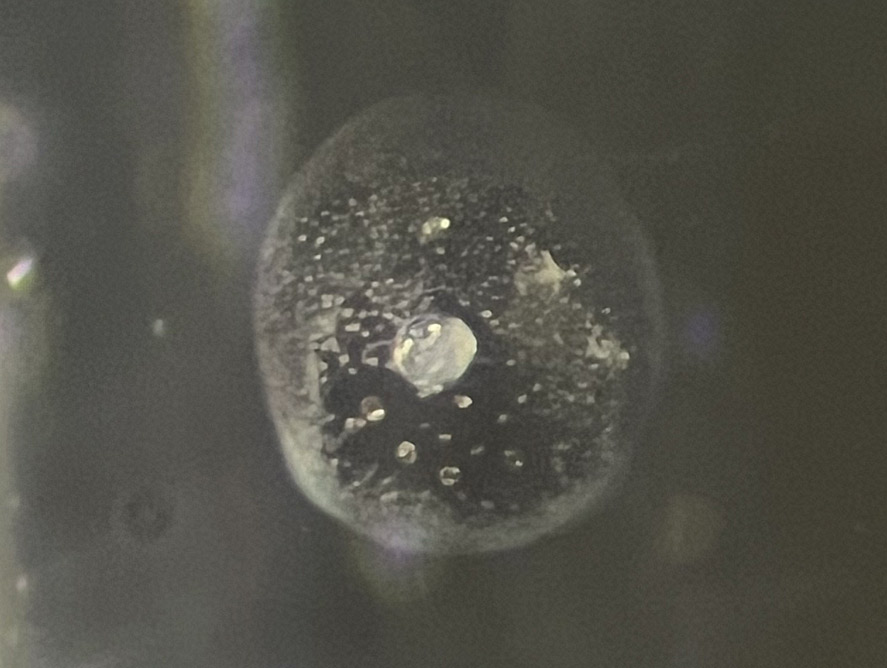
Treatment | Heating
A "snowball" inclusion or whitish partially-melted crystal inclusion surrounded by a tension haloHeat treatment can sometimes cause inclusions to warp and expand faster than the host gem, resulting in "snowball" inclusions that often have circular tension fractures around them due to the rapid expansion.

Synthetic | Flame Fusion
Both curved color banding and tiny gas bubbles can be seen in this synthetic star sapphireCurved color banding is one of the primary identifiers of synthetic sapphire, whether the normal or star variant. Gas bubbles can also often be observed under microscopy environments.
Contact Us
Get in touch with a Gemologist.
For gemological assessment requests, our laboratory evaluates gemstones as an impartial third-party assessor.
